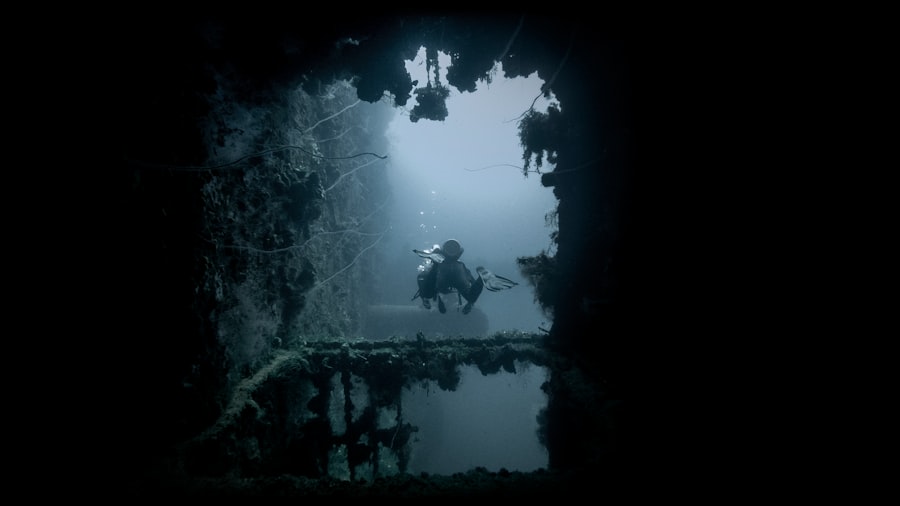The Drake Passage, a body of water situated between the southern tip of South America and Antarctica, is renowned for its tumultuous seas and unpredictable weather. Named after the English explorer Sir Francis Drake, who navigated these waters in the late 16th century, the passage serves as a critical maritime route for vessels traveling to and from the Antarctic region. Spanning approximately 800 kilometers (500 miles) in width, it connects the Atlantic and Pacific Oceans, making it a vital conduit for marine traffic.
The Drake Passage is not only significant for its geographical location but also for its unique ecological and climatic characteristics. Navigating the Drake Passage is often considered a rite of passage for sailors and adventurers alike. The waters are notorious for their rough conditions, which can change rapidly, creating challenges for even the most experienced mariners.
The passage has become a focal point for scientific research, tourism, and exploration, drawing attention from various sectors interested in understanding its complexities. As such, the Drake Passage stands as a testament to the power of nature and the resilience of those who dare to traverse its waters.
Key Takeaways
- Drake Passage is a narrow body of water between South America’s Cape Horn and the South Shetland Islands of Antarctica, known for its challenging maritime conditions.
- The weather and climate patterns in Drake Passage are characterized by strong winds, high waves, and rapidly changing conditions, making it one of the roughest seas in the world.
- Oceanographic conditions in Drake Passage are influenced by the Antarctic Circumpolar Current, creating a unique ecosystem and supporting diverse marine life.
- The passage’s impact on maritime travel includes navigational challenges, potential hazards, and the need for specialized vessels and experienced crews.
- Safety measures for rough seas in Drake Passage include advanced technology, strict safety protocols, and the presence of experienced expedition leaders to ensure the well-being of travelers.
Weather and Climate Patterns
The weather in the Drake Passage is notoriously volatile, characterized by strong winds, heavy precipitation, and rapidly shifting temperatures. The region experiences a unique climatic phenomenon due to its geographical position, where cold polar air meets warmer air from the south. This interaction often results in fierce storms that can arise with little warning, creating treacherous conditions for vessels navigating the area.
The average wind speeds can reach up to 40 knots, with gusts exceeding 60 knots during severe weather events. Seasonal variations also play a significant role in shaping the climate of the Drake Passage. During the summer months, from November to March, temperatures can be relatively mild, allowing for increased maritime activity.
However, even in summer, storms can occur unexpectedly, leading to dangerous sea conditions. Conversely, winter months bring frigid temperatures and increased ice presence, further complicating navigation. Understanding these weather patterns is crucial for anyone planning to traverse the passage, as they can significantly impact travel plans and safety.
Oceanographic Conditions

The oceanographic conditions in the Drake Passage are equally complex and dynamic. The passage serves as a meeting point for several major ocean currents, including the Antarctic Circumpolar Current, which flows from west to east around Antarctica. This current is one of the strongest ocean currents in the world and plays a vital role in regulating global climate patterns by transporting heat and nutrients across vast distances.
The interaction of these currents creates a unique marine environment that supports diverse ecosystems. Temperature gradients within the passage can also be quite pronounced, with colder waters near Antarctica contrasting sharply with warmer waters from the north. This variation contributes to rich nutrient upwelling, fostering an abundance of marine life.
The mixing of different water masses creates ideal conditions for phytoplankton growth, which forms the foundation of the food web in this region. As such, understanding the oceanographic conditions of the Drake Passage is essential for researchers studying climate change and its effects on marine ecosystems.
Impact on Maritime Travel
| Impact on Maritime Travel | Metrics |
|---|---|
| Number of cancelled cruises | 50 |
| Decrease in cargo ship traffic | 20% |
| Number of ports closed | 15 |
| Reduction in passenger ferry services | 30% |
The Drake Passage has a profound impact on maritime travel, particularly for vessels heading to Antarctica. Its reputation for rough seas has led many sailors to approach it with caution. The passage is often described as one of the most challenging stretches of water in the world due to its unpredictable weather and strong currents.
For commercial shipping routes, this means that careful planning and timing are essential to ensure safe passage. Moreover, the challenges posed by the Drake Passage have led to advancements in maritime technology and navigation techniques. Modern vessels are equipped with sophisticated weather forecasting systems and navigational aids that help mitigate risks associated with traversing these waters.
Despite these advancements, however, many sailors still regard crossing the Drake Passage as a formidable challenge that requires skill and experience. The passage remains a critical route for research expeditions and tourism, underscoring its importance in connecting human activity with one of the planet’s most remote regions.
Safety Measures for Rough Seas
Given the notorious conditions of the Drake Passage, safety measures are paramount for those venturing into its waters. Mariners are advised to stay informed about weather forecasts and sea conditions before embarking on their journey.
Additionally, training in emergency procedures is essential for crew members to ensure they are prepared for any unforeseen circumstances. Life-saving equipment is also a critical component of safety measures in the Drake Passage. Vessels are required to carry life rafts, flares, and other emergency supplies to assist in case of an emergency at sea.
Regular drills and safety briefings help ensure that crew members are familiar with their roles during emergencies. Furthermore, many operators choose to travel in groups or convoys to enhance safety through mutual support and assistance during challenging conditions.
Wildlife and Biodiversity

The Drake Passage is not only significant for its maritime challenges but also for its rich biodiversity. The waters are home to a variety of marine species, including whales, seals, and numerous seabird species that thrive in this unique environment. The nutrient-rich waters support large populations of krill, which serve as a primary food source for many marine animals.
This abundance of life makes the passage an important area for ecological research and conservation efforts. Birdwatchers and wildlife enthusiasts flock to the Drake Passage to witness its diverse avian population. Species such as albatrosses, petrels, and penguins can often be seen soaring above or swimming through the waters.
The presence of these animals highlights the ecological significance of the region and underscores the need for continued conservation efforts to protect their habitats from human impact and climate change.
Historical Significance
The historical significance of the Drake Passage cannot be overstated. It has long been a critical route for explorers seeking to navigate between the Atlantic and Pacific Oceans. Sir Francis Drake’s expedition in the late 1500s marked one of the first recorded crossings of this treacherous waterway, paving the way for future exploration and trade routes.
Over the centuries, many explorers have braved its waters in search of new lands and resources. In addition to exploration, the passage has played a vital role in scientific research and understanding of polar regions. The early 20th century saw numerous expeditions aimed at studying Antarctica’s geography and climate, many of which relied on navigating through the Drake Passage.
Today, it continues to be a focal point for scientific inquiry as researchers seek to understand climate change’s impact on polar ecosystems.
Research and Scientific Exploration
The Drake Passage remains a hub for scientific research and exploration due to its unique oceanographic conditions and biodiversity. Researchers from around the world conduct studies aimed at understanding climate change’s effects on marine ecosystems and global weather patterns. The passage serves as an ideal location for studying ocean currents, temperature variations, and their implications for marine life.
In recent years, advancements in technology have allowed scientists to gather more data than ever before. Autonomous underwater vehicles (AUVs) and remote sensing technologies enable researchers to explore previously inaccessible areas of the passage. These innovations have led to new discoveries about marine species’ behavior and distribution patterns, contributing valuable insights into how climate change is affecting polar regions.
Tourist Experiences
Tourism in the Drake Passage has grown significantly over recent years as adventurers seek to experience its rugged beauty firsthand. Cruise operators offer trips that allow travelers to witness stunning landscapes while navigating through challenging waters. Many tourists embark on expeditions that include wildlife watching opportunities, providing them with a chance to see whales, seals, and seabirds up close.
For many travelers, crossing the Drake Passage is an unforgettable experience that combines adventure with education about polar ecosystems. Guided tours often include lectures from experts who share insights into the region’s ecology and history. This blend of adventure tourism and educational experiences has made the Drake Passage a sought-after destination for those looking to explore one of Earth’s last frontiers.
Challenges for Navigating the Passage
Despite advancements in technology and navigation techniques, challenges remain when navigating the Drake Passage. The unpredictable weather patterns can create hazardous conditions that require constant vigilance from mariners. Sudden storms can arise without warning, leading to rough seas that pose risks even for well-prepared vessels.
Additionally, icebergs present another significant challenge in these waters. As climate change continues to affect polar regions, ice melt has increased iceberg presence in the passage. Mariners must remain alert to avoid collisions with these massive floating structures while also being mindful of changing sea conditions that can affect navigation routes.
Future Outlook and Predictions
Looking ahead, the future of navigation through the Drake Passage will likely be shaped by ongoing research into climate change’s impacts on polar regions. As temperatures continue to rise, scientists predict shifts in ocean currents and marine ecosystems that could alter traditional navigation routes. Understanding these changes will be crucial for ensuring safe maritime travel in this vital waterway.
Furthermore, increased interest in Antarctic tourism may lead to more stringent regulations aimed at protecting fragile ecosystems within the passage. Balancing economic interests with environmental conservation will be essential as more vessels venture into these waters. Ultimately, continued research and collaboration among scientists, policymakers, and maritime operators will play a pivotal role in shaping the future of navigation through this iconic passage while safeguarding its unique ecological heritage.
The Drake Passage, a notoriously turbulent stretch of water between the southern tip of South America and Antarctica, continues to be a focal point for climate researchers and maritime experts. Recent studies have highlighted the increasing frequency of extreme weather conditions in this region, which are believed to be linked to broader climate change patterns. For those interested in exploring more about the current conditions and scientific explorations in the Drake Passage, a related article can be found on MyGeoQuest.
For further reading, visit the article on MyGeoQuest.
WATCH NOW! Drake Passage: Earth’s Deadliest Waters Revealed
FAQs
What is the Drake Passage?
The Drake Passage is the body of water between the southern tip of South America and the northern tip of the Antarctic Peninsula. It is known for its rough seas and challenging sailing conditions.
What are the current conditions on the Drake Passage?
The current conditions on the Drake Passage can vary greatly, but it is generally characterized by strong winds, large waves, and cold temperatures. These conditions can make sailing through the passage difficult and potentially dangerous.
Are there any specific weather patterns or phenomena that affect the Drake Passage?
The Drake Passage is influenced by the Antarctic Circumpolar Current, which is the strongest ocean current in the world. This current, along with the strong westerly winds known as the Roaring Forties, contributes to the challenging sailing conditions in the area.
What are the best times to travel through the Drake Passage?
The best times to travel through the Drake Passage are during the austral summer months of November to March, when the weather and sea conditions are relatively milder. However, even during these months, the passage can still experience rough seas and strong winds.
Are there any safety precautions to take when traveling through the Drake Passage?
When traveling through the Drake Passage, it is important to be prepared for rough seas and adverse weather conditions. It is recommended to travel with an experienced crew and to ensure that the vessel is equipped to handle the challenging conditions. Additionally, it is advisable to consult with weather and maritime authorities for the latest information before embarking on a journey through the passage.
